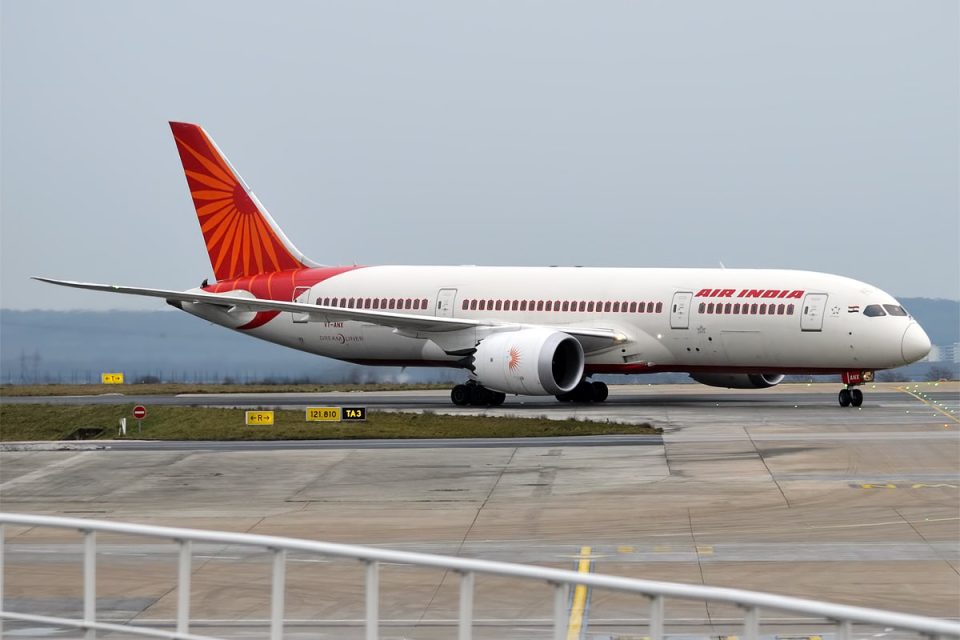Aviation
Air India’s Newest Bengaluru-London Gatwick Route Opens Doors to Travelers

Beginning on April 1, 2024, new flights connecting Bengaluru to London Gatwick will be offered by Air India, the Indian carrier owned by Tata, marking an exciting turning point for travelers.
Air India has achieved a noteworthy milestone with this expansion, broadening its current network of flights from multiple Indian locations, such as Amritsar, Ahmedabad, Goa, and Kochi, to London Gatwick.
The airline has been strengthening its position in the London market, and it is based in Gurugram. Air India currently has a full schedule of flights to and from London. There are several daily flights from Delhi and Mumbai to London Heathrow in addition to three weekly flights from Amritsar, Goa Mopa, Cochin, and Ahmedabad to London Gatwick.
A further example of Air India’s dedication to providing passengers with practical and effective travel options is the recently launched Bengaluru-London Gatwick route. To provide passengers with a comfortable and enjoyable flight, the airline will use contemporary Boeing 787-8 Dreamliners on this route.
In addition to smooth connectivity and more travel options, passengers may anticipate five weekly flights between Bengaluru and London Gatwick. The recommended flight itinerary provides the best scheduling for both pleasure and business travelers, with departures from Bengaluru at 14:05 and arrivals in London Gatwick at 20:05, followed by return flights that leave London Gatwick at 21:35 and arrive in Bengaluru at 11:50 on the next day.
Passengers can anticipate a seamless and comfortable journey aboard Air India’s modern Dreamliner aircraft, coupled with the airline’s renowned hospitality and superior service standards.

Airlines
Air India to Launch aircraft maintenance training institute in Bengaluru

Air India, one of India’s leading global airlines, is set to establish a Basic Maintenance Training Organization (BMTO) in Bengaluru.
This institute will offer a comprehensive Aircraft Maintenance Engineering (AME) program certified by the Directorate General of Civil Aviation (DGCA). The program will follow an integrated 2+2 year structure, combining classroom learning with practical, hands-on training.
This initiative is part of Air India’s broader goal of creating a robust aviation ecosystem in India. With plans to expand its fleet and strengthen its operations, the airline aims to build a skilled workforce of maintenance engineers, making the organization self-reliant while supporting its ambitious transformation journey.
This country tops visa rejections in the popular Schengen countries
To bring this vision to life, air india has partnered with Bengaluru Airport City Limited (BACL), a subsidiary of Bangalore International Airport Limited (BIAL). Together, they will develop a state-of-the-art facility spanning 86,000 square feet at Bengaluru Airport City.
This purpose-built campus will feature modern classrooms, well-equipped laboratories, and qualified trainers to deliver world-class education and training. The institute is expected to become operational by mid-2026.
The BMTO will be located close to Air India’s new 12-bay Maintenance, Repair, and Overhaul (MRO) facility, also set to open in Bengaluru by early 2026. The AME program will begin with two years of academic coursework, followed by two years of practical training at the MRO, ensuring students receive hands-on experience adhering to industry standards.
Sanctions & Engine Issues Ground Half of Russia’s A320neo fleet
In the meantime, Air India has introduced a Cadet AME program in collaboration with reputable institutions in Bengaluru and Hyderabad.
This ensures continuity in its commitment to developing skilled aircraft maintenance engineers while the BMTO facility is under construction. The program also allows students to pursue a bachelor’s degree through university partnerships, enhancing their career and academic opportunities.
With this initiative, air india plane aims to address the growing demand for skilled professionals in aircraft maintenance and engineering, air india new planes contributing to the development of India’s aviation sector and creating specialized career paths for aspiring engineers.
-

 Aviation2 months ago
Aviation2 months agoMicrosoft Flight Simulator Raises $3 Million to Bring Back the An-225 Mriya
-

 Airlines2 months ago
Airlines2 months agoQatar Citizens Can Travel to the United States Without a Visa
-

 Aviation2 months ago
Aviation2 months agoQatar Airways bans these new Electronic Devices on plane
-

 Airlines2 months ago
Airlines2 months agoJapan Airlines Rolls Out Free Domestic Flights to International Passengers
-

 Defence2 months ago
Defence2 months agoWhich Country Has the Largest Fleet of Fighter Aircraft?
-

 Airport2 months ago
Airport2 months agoWestern Sydney Airport Welcomes Its First Plane After 6 Years of construction
-

 Travel2 months ago
Travel2 months agoQatar Airways Launches Four Additional Flights from Amsterdam
-

 Aviation2 months ago
Aviation2 months agoDid you know ? Once Boeing 747 carried 1088 passenger in 1991








